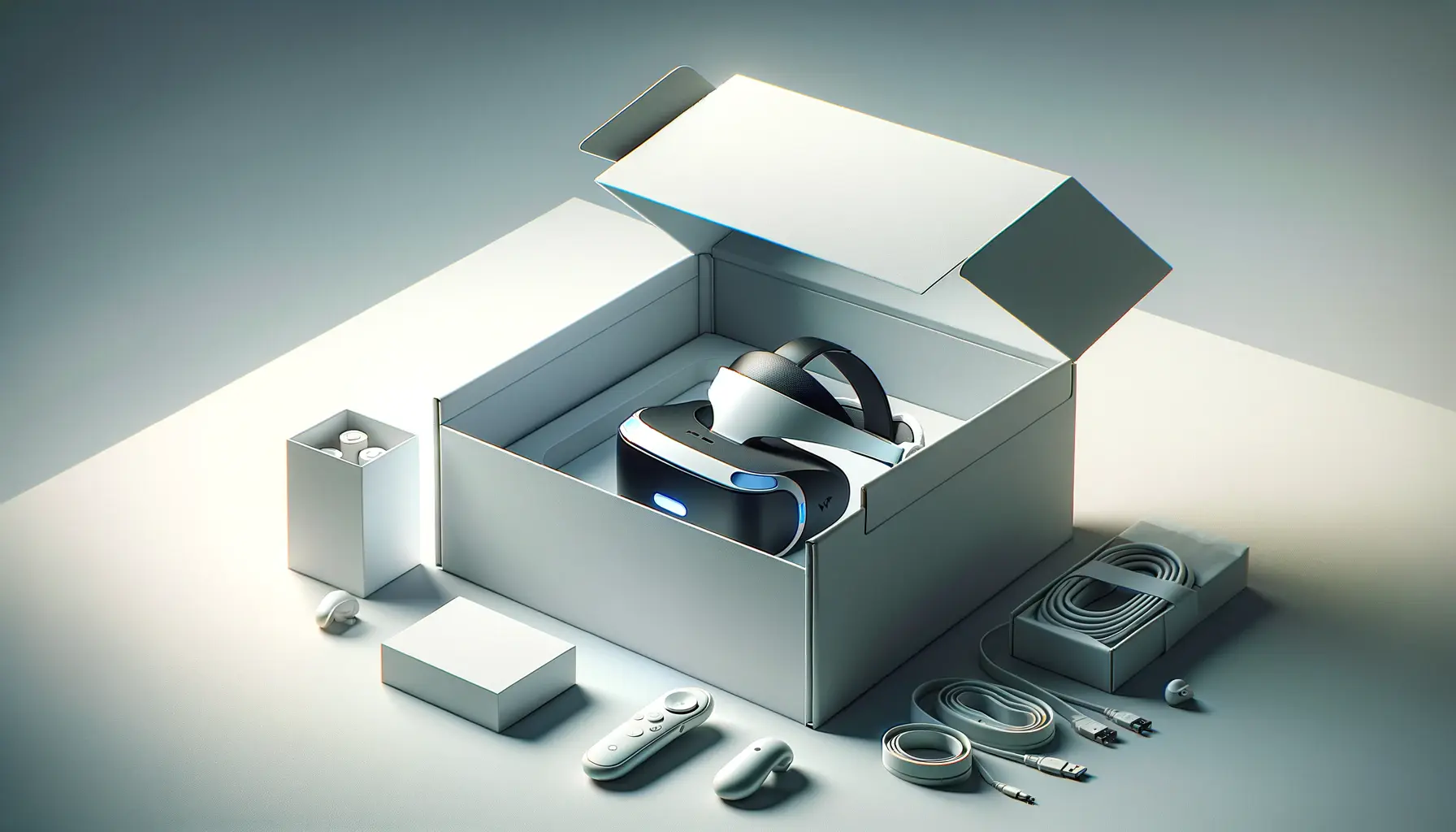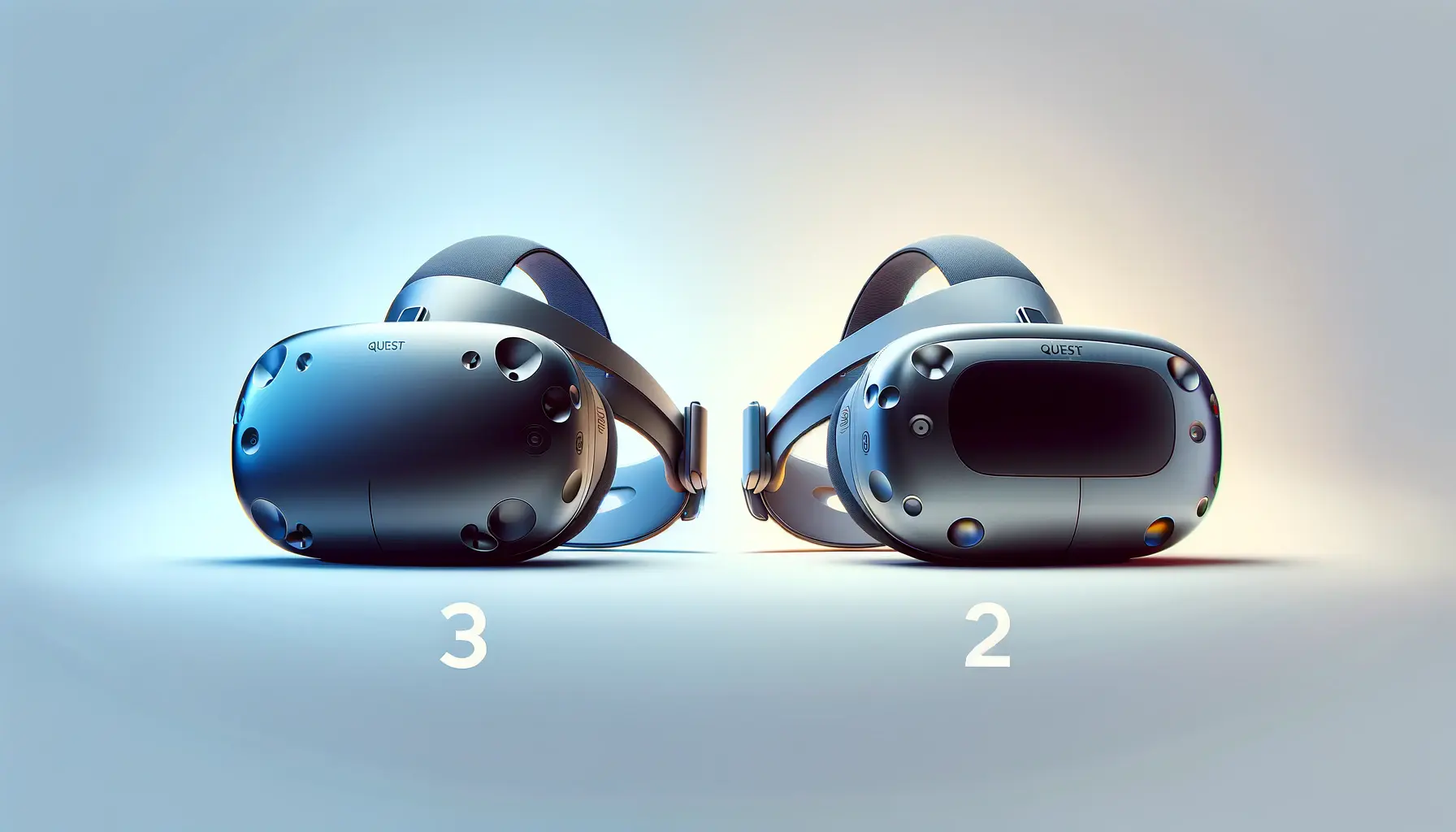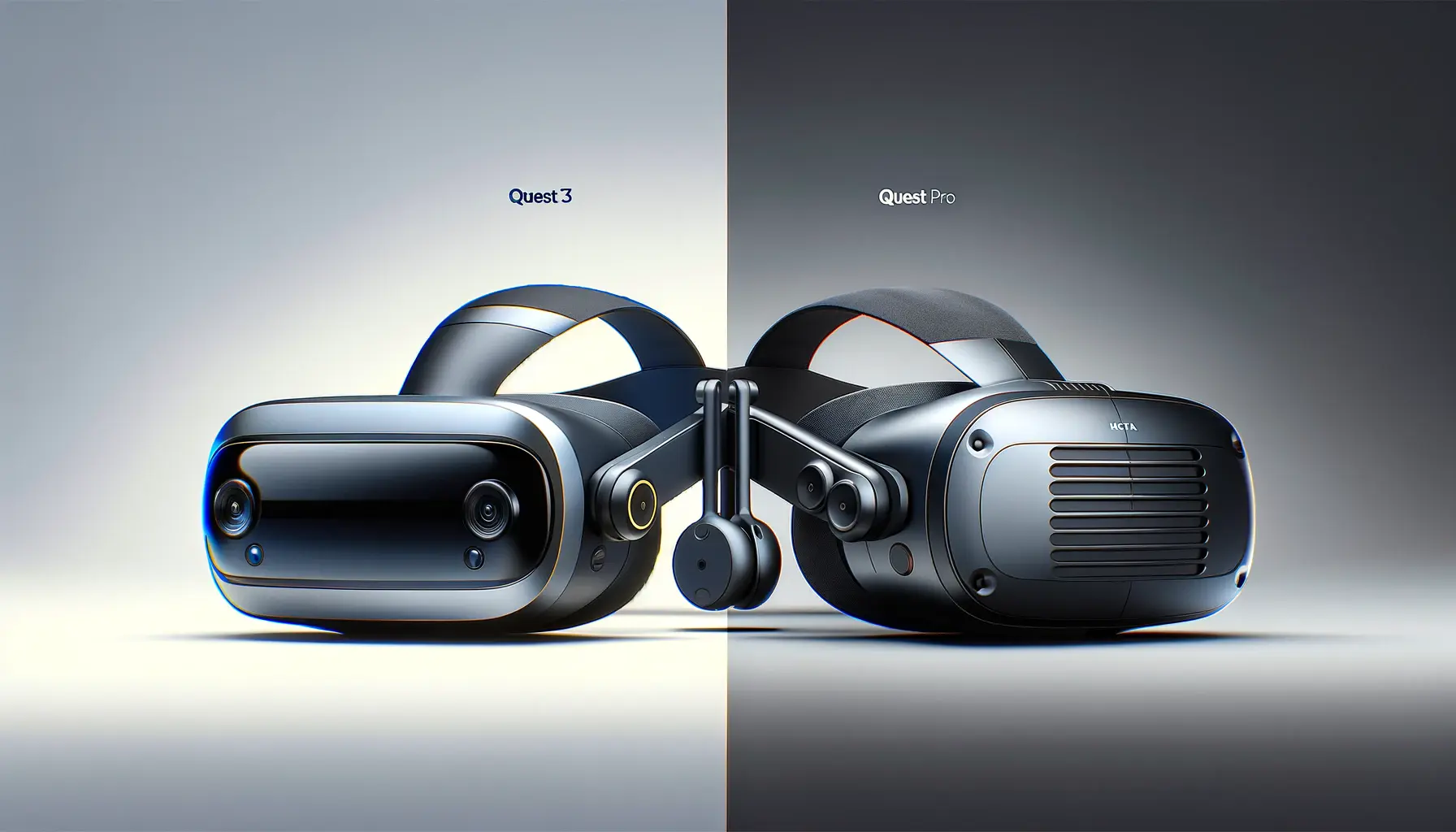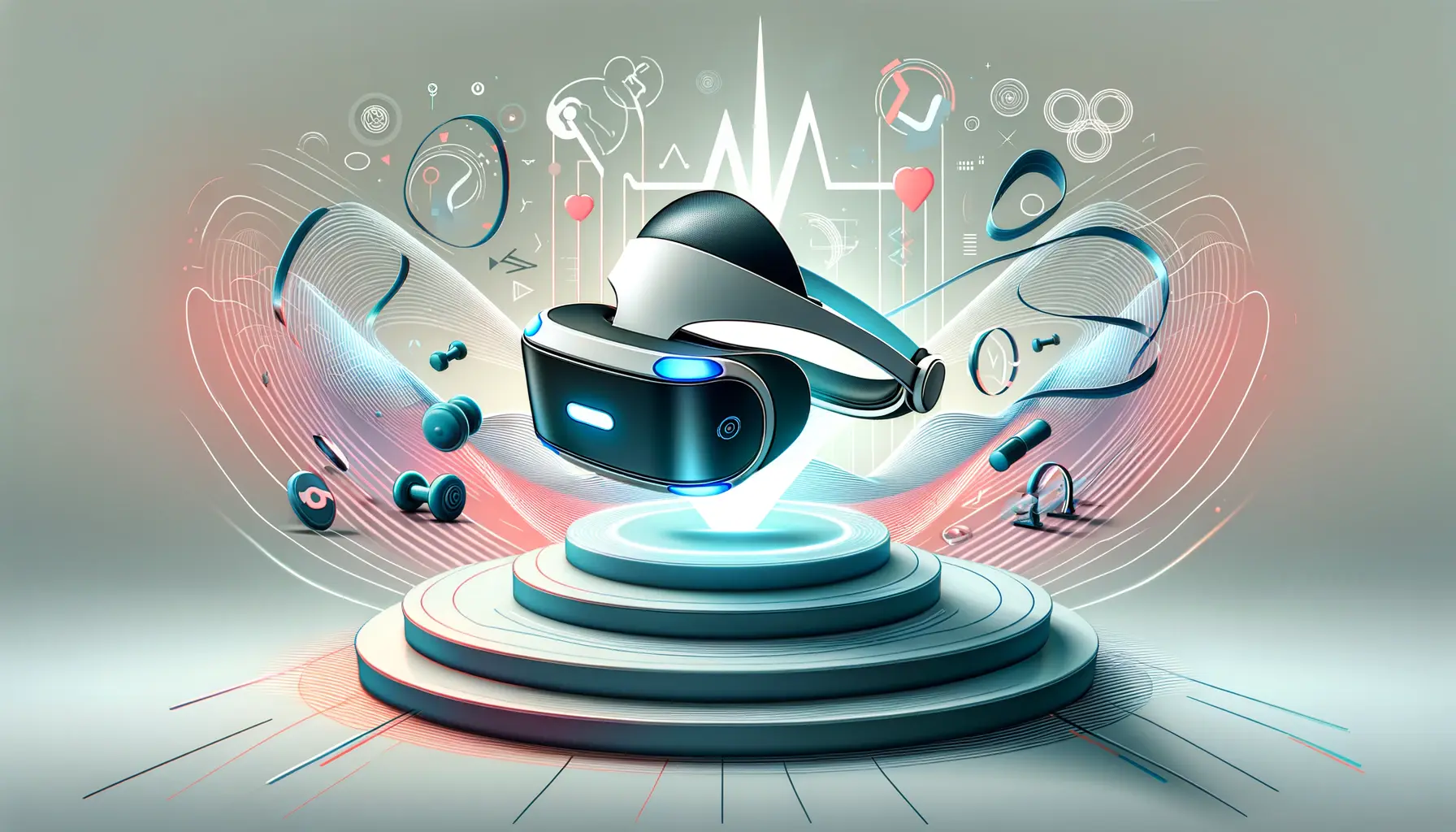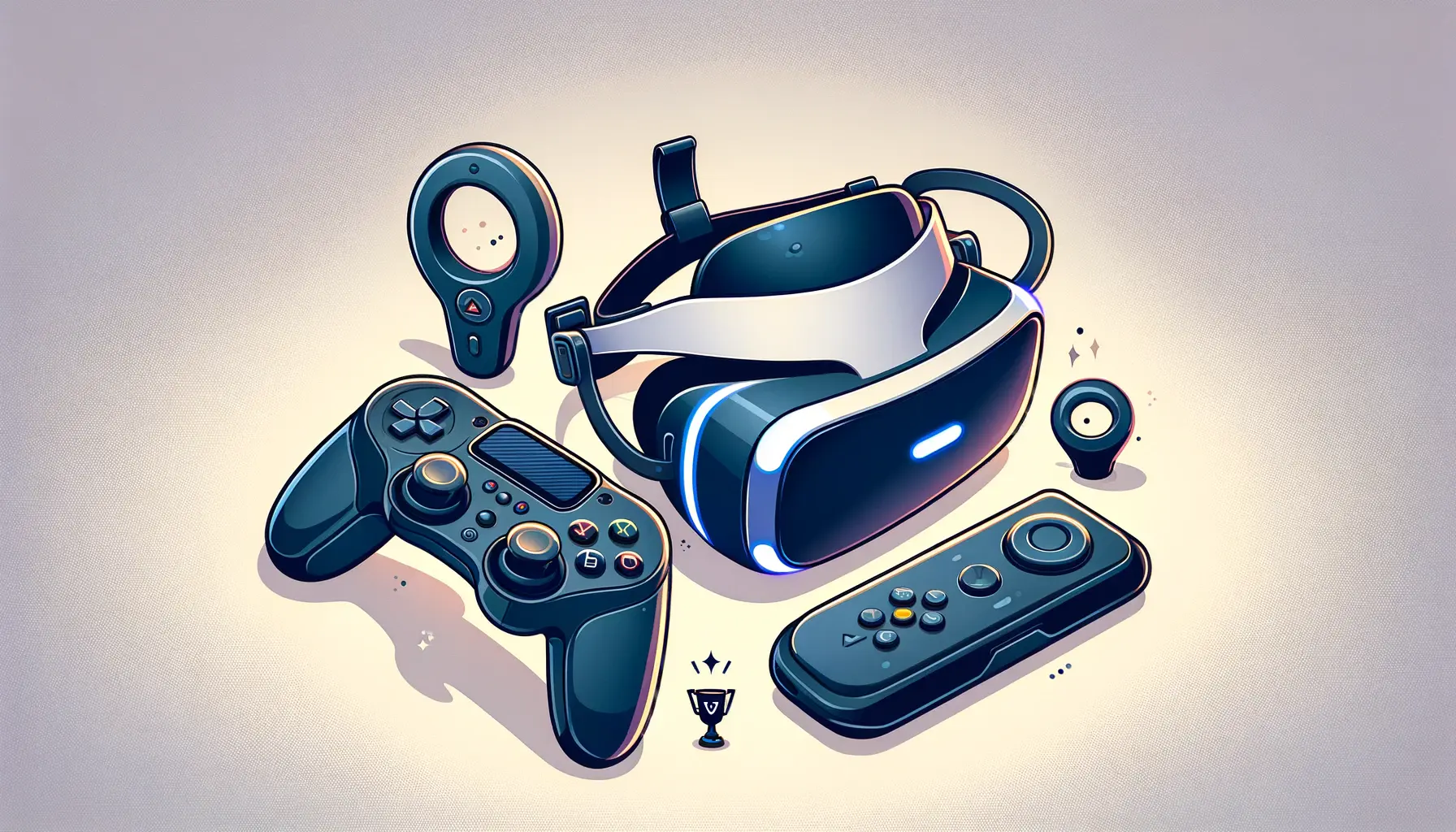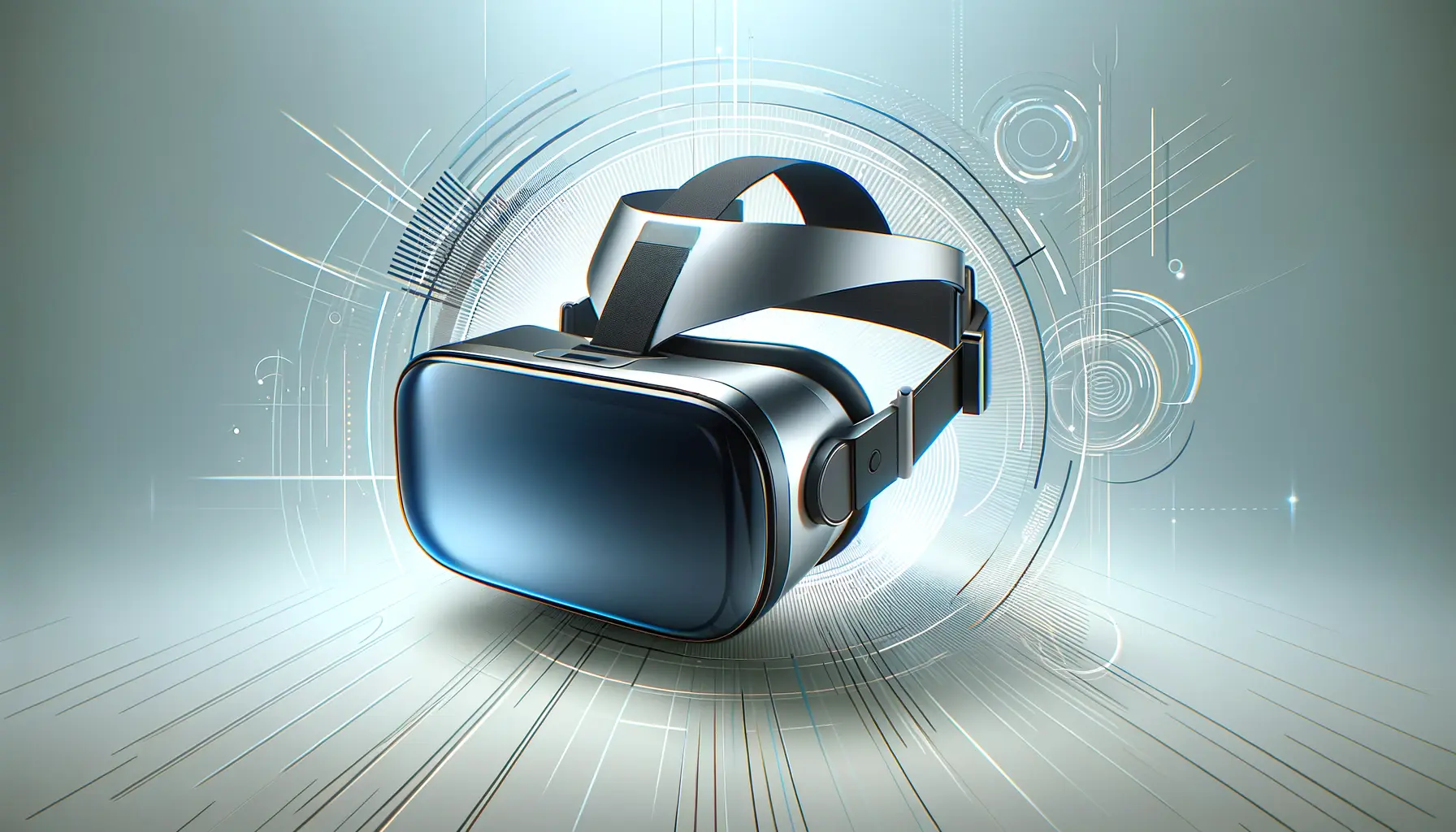The anticipation surrounding the release of the Quest 3 has been palpable, marking a significant milestone in the evolution of virtual reality (VR) technology.
As the latest offering from Meta, the Quest 3 promises to push the boundaries of immersive gaming and digital interaction.
This article delves into the unboxing experience and first impressions of the Quest 3, offering a comprehensive look at what users can expect from this cutting-edge device.
From the moment the box is opened, the Quest 3 sets a new standard for VR headsets.
The design, features, and capabilities of the Quest 3 are a testament to Meta’s commitment to advancing VR technology.
This article aims to provide an insightful overview of the Quest 3, exploring its aesthetics, setup process, and initial performance, ensuring readers gain a thorough understanding of its impact on the future of virtual reality.
Unveiling the Quest 3: A First Look
Design and Build Quality
The Quest 3’s design is both sleek and functional, showcasing a refined aesthetic that appeals to both seasoned VR enthusiasts and newcomers alike.
The headset’s lightweight construction and ergonomic design prioritize comfort, allowing for extended periods of use without discomfort.
Attention to detail is evident in every aspect of the Quest 3’s build, from the adjustable straps to the soft-touch materials that rest gently against the face.
Moreover, the Quest 3 introduces several design improvements over its predecessors, including a more balanced weight distribution and enhanced ventilation to prevent lens fogging.
These design choices not only improve the user experience but also reflect Meta’s dedication to addressing feedback from the VR community.
What’s in the Box?
Unboxing the Quest 3 is an experience in itself, revealing a carefully curated package that includes everything needed to dive into the world of VR.
The box contains the Quest 3 headset, two touch controllers, a charging cable, and a power adapter.
Meta also includes a glasses spacer, catering to users who wear prescription glasses, ensuring they too can enjoy a comfortable VR experience.
The inclusion of the touch controllers is particularly noteworthy, as they have been redesigned for improved ergonomics and precision tracking.
The tactile feedback and button placement feel intuitive, enhancing the overall immersion in VR environments.
This thoughtful packaging underscores Meta’s commitment to providing a seamless out-of-the-box experience for all users.
The Quest 3’s design and packaging set a new standard for VR headsets, emphasizing comfort, functionality, and user inclusivity.
Setting Up the Quest 3
The setup process of the Quest 3 is designed to be as straightforward and user-friendly as possible, ensuring that users can quickly dive into their VR experiences.
This section explores the initial setup steps, from powering on the device for the first time to navigating the user interface.
Initial Configuration
Upon powering on the Quest 3, users are greeted by an intuitive setup wizard that guides them through the process of configuring the headset.
This includes connecting to Wi-Fi, signing into a Meta account, and adjusting the interpupillary distance (IPD) settings to ensure optimal visual clarity.
The Quest 3’s setup process is indicative of Meta’s focus on accessibility, making advanced VR technology approachable for a broad audience.
The device also prompts users to define their play area by tracing a boundary within their physical space.
This safety feature, known as Guardian, helps prevent accidents by alerting users when they are close to stepping outside their designated play zone.
The ease with which these initial configurations can be completed highlights the Quest 3’s user-centric design philosophy.
Exploring the Interface
The Quest 3’s user interface (UI) is both elegant and functional, offering a seamless navigation experience.
Users can easily access their library of games and apps, explore new content in the Meta Quest Store, and adjust settings directly from the headset.
The UI also facilitates social interactions, allowing users to connect with friends, join multiplayer games, or attend virtual events together.
- Library and Store: The Quest 3 organizes purchased and downloaded content in an easily accessible library, while the store offers a wide range of VR content, from immersive games to educational apps.
- Social Features: Integrating social functionality directly into the UI, the Quest 3 makes it easy to stay connected with the VR community, share experiences, and explore new worlds together.
- Settings and Customization: Users have the ability to customize their experience, including adjusting visual and audio settings, managing storage, and configuring privacy options.
The Quest 3’s setup process and user interface are designed with the user in mind, offering a balance between simplicity and advanced functionality.
Immersive Gaming Experiences
The Quest 3 is not just a technological marvel in terms of hardware; it’s also a gateway to unparalleled immersive gaming experiences.
This section delves into the quality of gaming on the Quest 3, highlighting the advancements in VR gaming and the variety of games available.
With its powerful processor and advanced graphics capabilities, the Quest 3 delivers smooth, high-definition visuals that bring virtual worlds to life.
The device supports a wide range of VR games, from fast-paced action shooters to intricate puzzle games, catering to all types of gamers.
The Quest 3’s comprehensive game library, combined with its immersive display and responsive controls, sets a new benchmark for VR gaming.
Enhanced Interactivity and Realism
The Quest 3’s touch controllers are a significant factor in its immersive gaming experiences.
Featuring precise tracking and intuitive input methods, these controllers allow for natural, gesture-based interactions within games.
This level of interactivity enhances the realism of VR experiences, making players feel truly embedded in the virtual environments.
Furthermore, the Quest 3 incorporates haptic feedback in the controllers, providing tactile sensations that correspond to virtual interactions.
Whether it’s the recoil of a gun, the impact of a ball, or the sensation of raindrops, the haptic feedback adds a layer of depth to the gaming experience that was previously unattainable in earlier VR models.
A Diverse Game Library
The Quest 3 boasts an extensive library of VR games, featuring titles from both well-known developers and independent creators.
This diversity ensures that there is something for everyone, from immersive narrative adventures to competitive multiplayer games.
Notable titles include the latest installments of popular franchises, innovative indie games, and exclusive releases developed specifically for the Quest platform.
- Action and Adventure: Games that transport players to fantastical worlds, offering epic quests and thrilling challenges.
- Puzzle and Strategy: Titles that test the mind with complex puzzles, strategic gameplay, and problem-solving scenarios.
- Social and Multiplayer: Experiences that connect players from around the globe, fostering competition, collaboration, and community.
The Quest 3’s gaming capabilities are a testament to the evolution of VR technology, offering an immersive and diverse gaming experience that caters to all types of players.
Virtual Reality Beyond Gaming
The Quest 3’s impact extends far beyond gaming, opening up new possibilities in various fields such as education, fitness, and entertainment.
This versatility demonstrates the headset’s potential to revolutionize how we interact with digital content and with each other in virtual spaces.
By leveraging the immersive capabilities of the Quest 3, users can explore historical sites in stunning detail, attend virtual classes, or experience live concerts as if they were there in person.
This section explores the diverse applications of the Quest 3, highlighting its role in transforming traditional activities into immersive virtual experiences.
Educational Applications
One of the most promising applications of the Quest 3 lies in the realm of education.
Virtual reality offers an engaging and interactive way to learn, making complex subjects more accessible and enjoyable.
Students can take virtual field trips to distant locations, conduct experiments in simulated laboratories, or explore the human body in 3D, all from the comfort of their classroom or home.
This immersive approach to learning has the potential to enhance comprehension and retention, providing a hands-on experience that traditional teaching methods cannot match.
The Quest 3 serves as a powerful tool for educators, enabling them to create captivating educational content that motivates and inspires students.
Fitness and Well-being
The Quest 3 also ventures into the world of fitness and well-being, offering a range of VR workouts that make exercising fun and engaging.
Users can participate in virtual fitness classes, compete in sports simulations, or follow guided meditation sessions, all designed to promote a healthy lifestyle.
The immersive nature of these experiences makes it easier for users to maintain motivation and achieve their fitness goals.
Whether it’s boxing, yoga, or dance, the Quest 3 provides a unique and effective way to stay active, demonstrating the potential of VR to transform the fitness industry.
Entertainment and Social Interaction
Beyond gaming, the Quest 3 enriches the entertainment landscape with immersive films, virtual reality shows, and social platforms where users can meet and interact.
These experiences offer a new dimension of entertainment, allowing users to not just watch content, but to step inside it, offering a level of engagement that traditional media cannot provide.
The Quest 3’s social VR platforms also open up new avenues for interaction, enabling users to connect with friends and family in virtual spaces.
Whether it’s watching a movie together, exploring virtual worlds, or attending a virtual concert, the Quest 3 makes it possible to share experiences with others in a profoundly immersive way.
The Quest 3’s applications in education, fitness, and entertainment showcase its potential to transform various aspects of our lives, making virtual reality an integral part of our daily routines.
Advancements in VR Technology
The Quest 3 embodies the latest advancements in virtual reality technology, showcasing significant improvements in performance, interactivity, and user experience.
This section highlights the technological innovations that set the Quest 3 apart from its predecessors and competitors, illustrating how these advancements contribute to a more immersive and realistic VR experience.
From enhanced graphics and processing power to breakthroughs in tracking and haptic feedback, the Quest 3 is at the forefront of VR innovation.
These developments not only enhance the quality of VR experiences but also expand the possibilities for future applications of virtual reality.
Graphics and Processing Power
The Quest 3 is powered by a state-of-the-art processor that delivers stunning visuals and smooth, lag-free performance.
This leap in processing power allows for more complex and detailed virtual environments, pushing the boundaries of what’s possible in VR.
Enhanced graphics capabilities bring virtual worlds to life with unprecedented realism, making every experience more engaging and immersive.
Additionally, the Quest 3 supports higher resolution displays and a wider field of view, further enhancing the visual fidelity of VR content.
These improvements in graphics and processing power are crucial for delivering a truly immersive VR experience, allowing users to lose themselves in the virtual worlds they explore.
Tracking and Interactivity
The Quest 3 introduces advanced tracking technologies that accurately capture the user’s movements and gestures, translating them seamlessly into the virtual environment.
This precision tracking ensures a high level of interactivity, allowing users to interact with virtual objects and environments in a natural and intuitive way.
Hand tracking technology has also seen significant advancements, enabling users to control VR experiences without the need for physical controllers.
This development opens up new possibilities for interaction within VR, making the experience more accessible and engaging for a wider audience.
Haptic Feedback and Sensory Immersion
Haptic feedback technology in the Quest 3 has been refined to provide more nuanced and realistic tactile sensations.
This technology enhances the sense of presence in VR by simulating the feel of virtual objects and environments, adding a layer of realism to the experience.
The Quest 3 also explores new avenues of sensory immersion, including spatial audio that accurately replicates how sound behaves in real environments.
This auditory immersion complements the visual and tactile experiences, creating a fully immersive VR environment that engages all the senses.
- Key Technological Advancements:
- Enhanced graphics and processing power for more detailed virtual environments.
- Precision tracking for accurate movement and gesture recognition.
- Advanced haptic feedback for realistic tactile sensations.
- Spatial audio for immersive auditory experiences.
The Quest 3’s technological advancements are pivotal in advancing the field of virtual reality, offering users an unparalleled level of immersion and interactivity.
Challenges and Considerations
While the Quest 3 represents a significant leap forward in virtual reality technology, its adoption and integration into daily life are not without challenges.
This section examines some of the key considerations and obstacles that users and developers face with the Quest 3, from privacy concerns to the need for content diversity.
Understanding these challenges is crucial for both consumers and creators in the VR space, as it highlights areas for improvement and the potential impact of VR technology on society.
Addressing these issues is essential for ensuring the responsible and beneficial use of virtual reality.
Privacy and Data Security
As with any connected device, the Quest 3 raises questions about privacy and data security.
The device’s ability to track movements, interactions, and even gaze can collect a significant amount of personal information.
Ensuring the security of this data and providing users with clear privacy controls is paramount.
Users need to be aware of what information is collected, how it is used, and the measures in place to protect their privacy.
Meta has implemented various privacy features and settings in the Quest 3, allowing users to manage their data and control who can see their activities.
However, ongoing dialogue and transparency are necessary to maintain trust and address any emerging privacy concerns.
Content Diversity and Accessibility
The success of the Quest 3 also depends on the availability of diverse and accessible content.
While the device boasts an impressive library of games and applications, ensuring a wide range of content that appeals to different interests and needs is crucial.
This includes not only entertainment but also educational, fitness, and productivity applications that can broaden the appeal of VR.
Furthermore, making VR content accessible to users with disabilities is an important consideration.
This includes designing experiences that are inclusive of various physical and sensory abilities, ensuring that VR technology can be enjoyed by a wider audience.
Hardware Requirements and Cost
The advanced technology of the Quest 3 comes at a price, both in terms of the cost of the device itself and the hardware required to support the most demanding VR experiences.
While the Quest 3 is a standalone device, accessing certain features or content may require additional accessories or a compatible PC, potentially limiting its accessibility to a broader audience.
Efforts to reduce the cost of VR technology and make it more accessible are ongoing, with the aim of bringing immersive virtual experiences to a wider audience.
Balancing performance with affordability remains a key challenge for the future of VR.
- Key Challenges:
- Ensuring privacy and data security for users.
- Expanding content diversity and accessibility.
- Making VR technology more affordable and accessible.
Despite its advancements, the Quest 3 faces challenges that need to be addressed to ensure its successful integration into everyday life and the broader acceptance of VR technology.
Future Prospects of VR with Quest 3
The Quest 3 not only represents the current pinnacle of virtual reality technology but also sets the stage for the future of VR.
Its advanced features and capabilities hint at a future where VR is seamlessly integrated into various aspects of our lives, from work and education to social interaction and entertainment.
This section explores the potential future developments in VR technology inspired by the Quest 3 and the impact these advancements could have on society.
As VR technology continues to evolve, we can anticipate further improvements in immersion, interactivity, and accessibility.
The Quest 3 is just the beginning of what’s possible in virtual reality, serving as a foundation for future innovations that will continue to transform our digital experiences.
Enhanced Realism and Immersion
Future iterations of VR technology, building on the Quest 3’s advancements, are expected to achieve even greater levels of realism and immersion.
This includes more lifelike graphics, improved haptic feedback systems, and even more sophisticated tracking technologies that can capture nuanced human expressions and movements.
Such advancements will make virtual experiences indistinguishable from reality, opening up new possibilities for VR applications in simulation, training, and entertainment.
Moreover, the development of technologies like augmented reality (AR) and mixed reality (MR) alongside VR will lead to new types of hybrid experiences.
These will blend the physical and digital worlds in ways that are currently unimaginable, further expanding the scope of virtual reality.
Wider Accessibility and Adoption
As VR technology becomes more affordable and accessible, we can expect a significant increase in its adoption across various sectors.
The Quest 3’s success in making VR more user-friendly and less dependent on external hardware is a step in the right direction.
Future advancements will likely focus on reducing costs and removing barriers to entry, making VR technology a staple in households and industries worldwide.
This widespread adoption will also drive the creation of more diverse and inclusive content, catering to a broader range of interests and needs.
As more people experience the benefits of VR, its applications will expand beyond gaming and entertainment to include more practical uses in education, healthcare, and remote work.
Impact on Society and Culture
The integration of VR into daily life has the potential to significantly impact society and culture.
Virtual reality offers new ways to connect, learn, and collaborate, transcending physical limitations and bringing people together in shared virtual spaces.
As VR technology, exemplified by the Quest 3, becomes more embedded in our lives, it will shape how we interact with information, with each other, and with the world around us.
The future of VR, inspired by the advancements of the Quest 3, promises a world where the boundaries between the physical and digital are blurred, offering new opportunities for exploration, creativity, and human connection.
The journey of VR is far from over, and the Quest 3 is a significant milestone on this exciting path.
The Quest 3 not only advances the state of VR technology but also opens the door to a future where virtual reality enhances every aspect of our lives, offering new possibilities for connection, learning, and entertainment.
Embracing the Future with Quest 3
The journey through the unboxing, setup, and exploration of the Quest 3’s capabilities has revealed a device that is not just a leap forward in virtual reality technology but a glimpse into the future of digital interaction.
The Quest 3, with its advanced features and user-centric design, stands as a testament to the potential of VR to transform our digital experiences.
This conclusion aims to encapsulate the essence of the Quest 3, reflecting on its impact and the promising horizon it heralds for virtual reality.
The Quest 3: A Catalyst for Change
The Quest 3’s introduction into the market is more than just the release of a new gadget; it’s a pivotal moment in the evolution of virtual reality.
With its enhanced graphics, immersive gaming experiences, and applications beyond entertainment, the Quest 3 is setting new standards for what VR can achieve.
It challenges us to rethink our engagement with digital worlds, offering a platform that is as versatile as it is immersive.
The Quest 3 is not merely a device but a catalyst for change, pushing the boundaries of virtual interaction and connectivity.
Key Takeaways from the Quest 3 Experience
- Design and Build Quality: The Quest 3’s ergonomic design and high-quality build emphasize comfort and durability, making extended VR sessions more enjoyable.
- Immersive Gaming and Beyond: With a vast library of games and applications, the Quest 3 offers diverse virtual experiences that go beyond traditional gaming, touching on education, fitness, and social interaction.
- Technological Advancements: The Quest 3 showcases significant advancements in VR technology, including improved graphics, precision tracking, and haptic feedback, enhancing the overall immersion and realism of virtual experiences.
- Challenges and Considerations: Despite its innovations, the Quest 3 faces challenges such as privacy concerns, content diversity, and accessibility, highlighting areas for future improvement and growth.
- Future Prospects: The Quest 3 not only represents the current state of VR technology but also sets the stage for future developments, promising even greater levels of immersion, interactivity, and accessibility.
In conclusion, the Quest 3 is a remarkable milestone in the journey of virtual reality, offering a window into the future of how we interact, learn, and play.
Its release marks a significant moment in the ongoing evolution of VR, showcasing what is currently possible while also laying the groundwork for future innovations.
As we continue to explore and expand the capabilities of virtual reality, the Quest 3 serves as a beacon, guiding us toward a future where the digital and physical worlds become increasingly intertwined.
The Quest 3 is not just a new piece of technology; it’s a new way of experiencing the world, offering endless possibilities for creativity, connection, and exploration.
Quest 3 VR Headset: Frequently Asked Questions
Explore the most common inquiries about the Quest 3 VR headset to enhance your understanding and experience.
The Quest 3 offers enhanced graphics, improved ergonomics, and advanced tracking capabilities, setting a new standard in immersive VR experiences.
Yes, the Quest 3 is a standalone VR headset that operates independently of a PC, offering a comprehensive library of games and apps.
Absolutely, the Quest 3 supports a variety of fitness and exercise apps, making it an ideal choice for virtual workouts and health activities.
The Quest 3 incorporates multiple privacy settings and data security measures, allowing users to manage their information with confidence.
The Quest 3 offers a battery life of approximately 2-3 hours, depending on the intensity of the application or game being used.
Yes, the Quest 3 provides access to a range of entertainment options, including movies, live concerts, and virtual events.
Yes, the Quest 3 supports multiplayer gaming, allowing users to connect with friends and compete or collaborate in virtual spaces.
The Quest 3 enhances learning by offering immersive educational content, making complex subjects more accessible and engaging for students.



